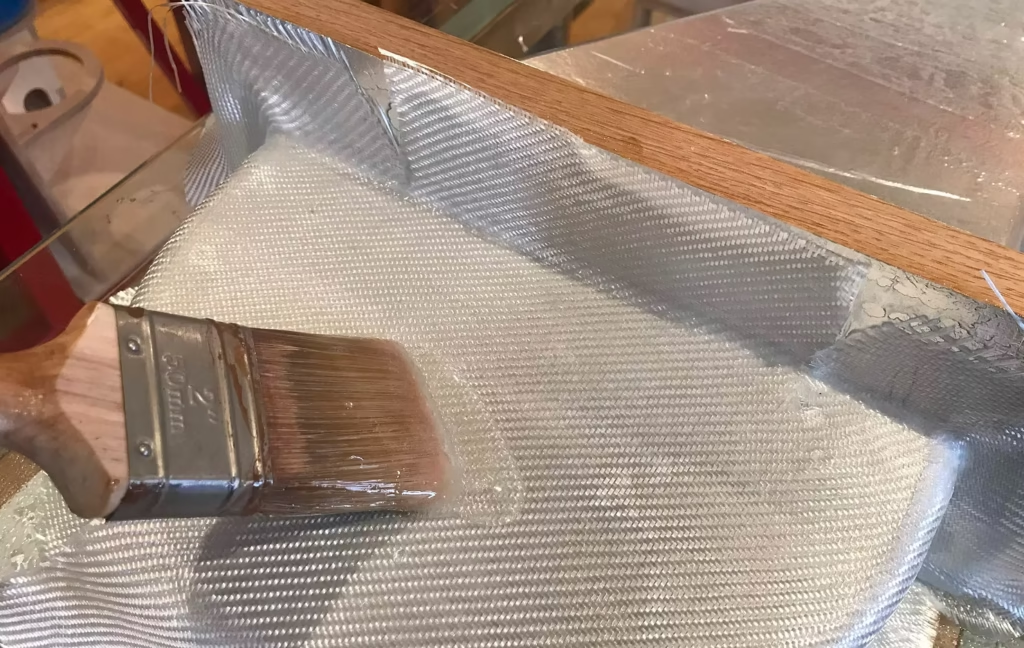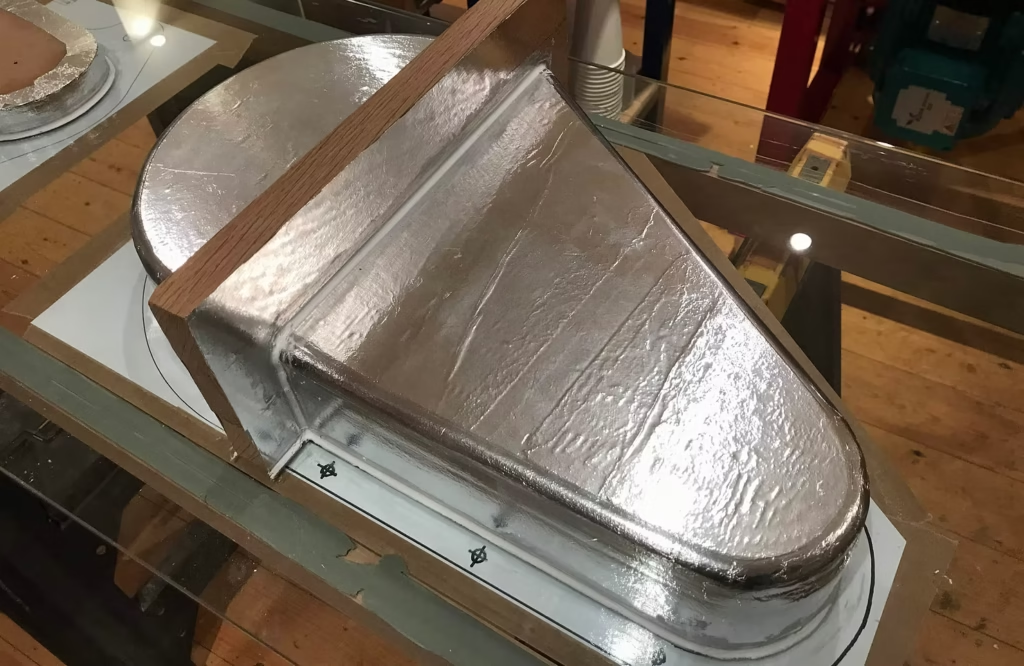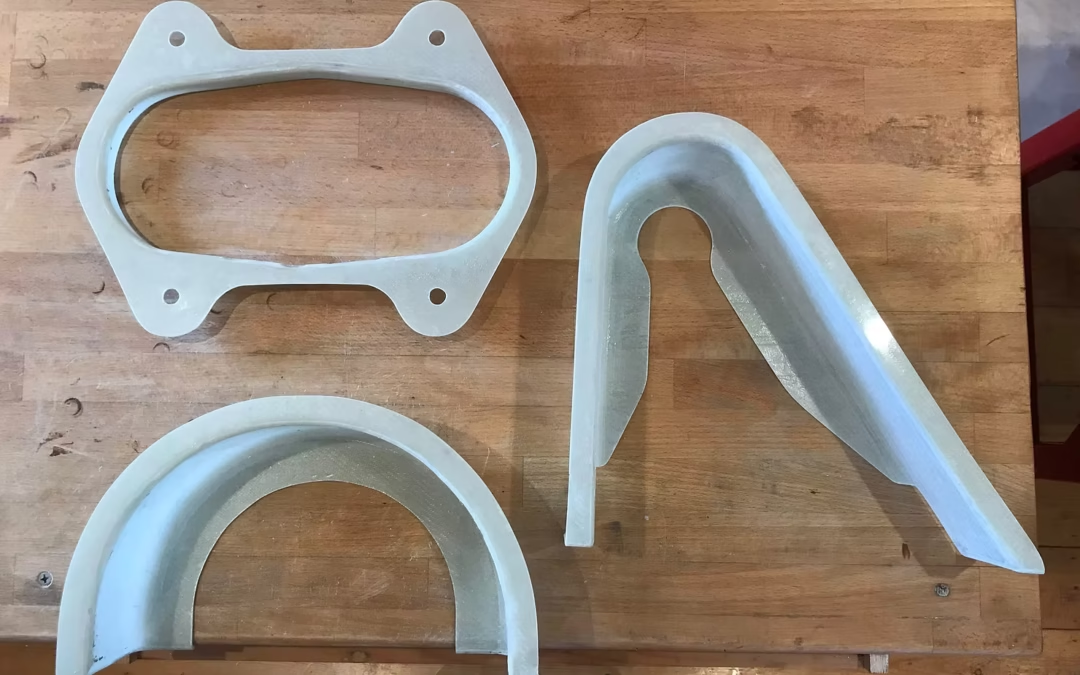19 years ago I produced my first ever composite moulding. I remember it well – a fuselage component for a light aircraft prototype laminated on my first day at AEL (now Airborne UK). As an introduction to the world of composites, it’s fitting that it was made using the time-honoured ‘wet-layup’ method – hard to forget the sense of excitement felt when glass fabric and a pot of resin are combined for the first time to produce a strong yet lightweight part! Fast-forward 19 years and I find myself once again producing wet-layup mouldings as part of an exciting test-rig build project for #RheEnergise.
For most production applications today, the wet-layup method has been superseded by techniques that offer greater consistency and lower labour costs, such as ‘prepreg’ and resin-infusion, however there are still times when it’s very obviously the most appropriate choice.

Brushing resin into fabric….
At its most basic, the wet-layup technique consists very simply of brushing or rolling resin into plies of glass (or carbon) fabric positioned on an appropriate mould tool, then allowing the resin to cure at room temperature before releasing the moulding and trimming to shape using simple hand tools: Happily this can all be all be done with minimal equipment (hence the informal term ‘bucket and brush’). Furthermore, the mould doesn’t need to be exposed to high temperatures or pressures so it can be made from almost anything, especially if it’s only intended for one or two uses. The picture below shows a mould constructed in-house for the chain guard parts: It’s shaped by hand from a few spare pieces of MDF, then covered in aluminium foil and mounted on a toughed glass base. Whilst it’s unlikely to win any prizes for beauty, it’s certainly a very effective and low-cost way to produce one-off functional mouldings!

Single-use MDF tool simply covered in aluminium foil
The primary attraction of the wet-layup technique is clearly the low investment requirement, both in terms of capital equipment and tooling. But of course it also has its limitations: The quality of the final product is highly dependent on the skill of the laminator and even with the best labour, the resulting laminate won’t be as consistent as a prepreg or resin-infused equivalent – greater scatter in performance naturally results in lower design values. It also takes some time to brush or roll the resin into the fabric one ply at a time; whilst this is of minor consequence for small mouldings, the issue naturally grows with the part.
So if you’re looking for serial production of large, high-performance mouldings, wet-layup is unlikely to be the most attractive option. However, if you’re after a limited number of modestly-sized parts and mechanical performance isn’t super-critical, then it’s quite possible that this early production technique is still the most appropriate!
Please do get in touch if you could use some input in relation to a composites project: We offer design, analysis and consultancy services and can also assist in the production of small prototypes or one-off projects.
#OrthotropicEngineering #Composites #EngineeringDesign #StructuralAnalysis #SpecialProjects

